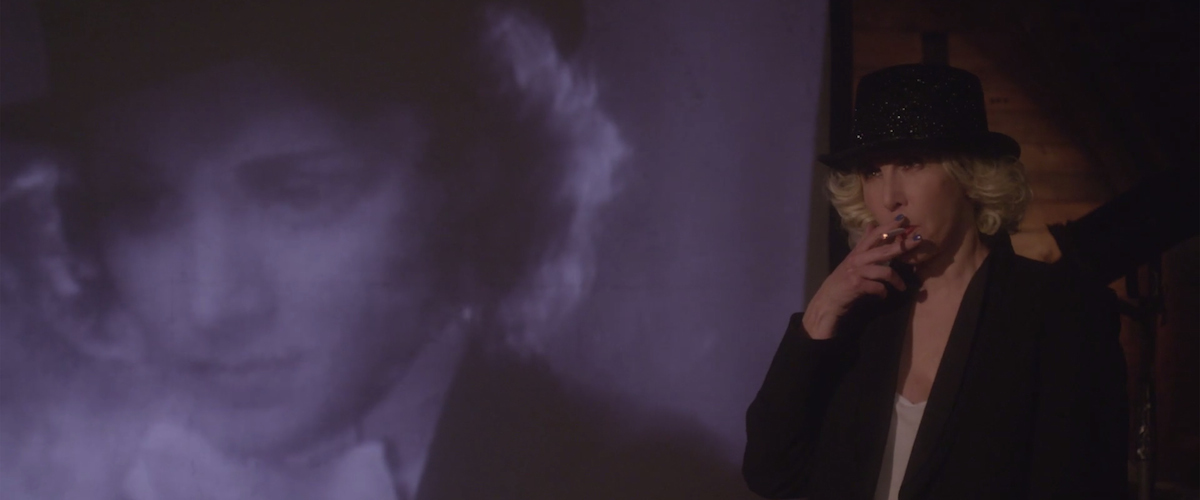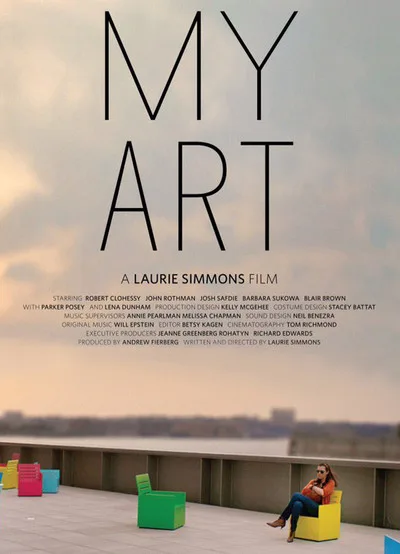“There were so many images when I was growing up in magazines and on television of the perfect post-WWII home. When I first looked at storybooks as a child, I felt this desire, this compulsion to go right into the page and join those characters.”—Laurie Simmons in a 2016 Tate interview
Anytime our dreams fail to be realized, cinema beckons to us with the promise of sanctuary. For a couple hours, our daily struggles are placed on hold as we escape into the lives of others. What may be unattainable in reality can suddenly seem within our grasp. The desires we shy away from articulating out loud are expressed with wit and poetry by the characters flickering before us. Illusions of perfection may only exist on a movie screen, but we can learn a lot about ourselves by lingering in them. Few films have tackled these concepts as brilliantly as Woody Allen’s 1985 masterpiece, “The Purple Rose of Cairo,” in which a Depression-era waitress (Mia Farrow) is pursued by the fictional man of her dreams as well as the man who portrayed him onscreen (both played by Jeff Daniels). The picture is ultimately a tragic one, as sustainable happiness proves elusive for Farrow’s mortal heroine. One of the most refreshing things about Laurie Simmons’ similarly provocative feature directorial debut, “My Art,” is in how it challenges the very notion of what constitutes a happy ending.
Though Simmons is a renowned artist with a career spanning over four decades, she is best known to moviegoers as the real-life mother of Lena Dunham, a role that she also portrayed in her daughter’s 2010 gem, “Tiny Furniture.” It’s easy to mistake Simmons’ character in the picture—an acclaimed photographer of miniature artwork—as an entirely accurate version of herself. “My Art” has been described by Simmons as her attempt to explore the mind of a sixty-something female artist on her own terms, and while her performance is just as deftly understated as it was in Dunham’s film, it contains different layers of intrigue. Any theory that “My Art” is a direct follow-up to “Tiny Furniture” is refuted by the opening minutes, as Simmons shares her only scene with Dunham, who is cast not as her daughter but her successful former student, Meryl. This striking name choice instantly caused me to recall the most famous of Meryls, Ms. Streep, who starred in Simmons’ 2006 short, “The Music of Regret,” a 40-minute musical that romantically paired the actress with various ventriloquist dummies. Household items inspired by the utopian postwar imagery Simmons observed in her youth were brought to life by costumed dancers, accentuating the innate artifice of the objects themselves.
“My Art” takes this concept a step further by placing Simmons in meticulous recreations of classic Hollywood films. As Ellie, a teacher yearning for recognition in the NYC arts community, Simmons has difficulty voicing her true feelings. There’s an amusing moment where she hands a student back some snacks that he had brought to class, pretending to have enjoyed them and even asking him to e-mail her the recipe. When Ellie agrees to stay at her friend’s summer home and studio in Upstate New York (the same destination Dunham’s heroine ended up on HBO’s “Girls”), she finds that her personal voice is liberated within the art that she creates. Her welcome presence on the property is of immediate interest to Frank (Robert Clohessy), a recently widowed landscaper, and his partner, Tom (Josh Safdie). Neither man has found fulfillment in his work, and Ellie’s experiments with video and back projection prove to be an irresistible distraction, much to the bewilderment of Tom’s wife (hilariously played in two brief scenes by Parker Posey). Having enjoyed his past career in acting, Frank jumps at the opportunity to be in front of the camera with Ellie, even going so far as to show up at the studio unannounced. When he asks Ellie what motivates her to re-stage scenes immortalized by iconic actors, she opens up about her fascination with the impossibility of ordinary people being the people onscreen, even as the camera allows them to temporarily inhabit that same space. Ellie’s video art could be interpreted as a hybrid of Herbert Ross’ “Play it Again, Sam,” in which Woody Allen’s neurotic protagonist found himself uttering the same words as his idol, Bogie, in “Casablanca,” and Allen’s own “Zelig,” the playful comedy where the filmmaker inserted himself into archival footage.
Many of the best stretches in “My Art” are the recreations themselves, where Simmons gets to exploit her love of the “Kubrick Stare” in everything from “A Clockwork Orange” to Richard Quine’s “Bell, Book and Candle,” though the camera doesn’t zoom in close enough to replicate the latter film’s unforgettable shot of Kim Novak’s eyes juxtaposed with those of her cat. Of more pertinent interest to Simmons is the female gaze and how it can subvert male fantasies by contextualizing them. Among Ellie’s trio of willing volunteers is John (John Rothman, featured in both “Zelig” and “The Purple Rose of Cairo”), the stepfather of her aforementioned student, who has no shame in admitting that he prefers dating women half his age. It’s no coincidence that Ellie unearths a scene from Irving Pichel’s 1948 farce, “Mr. Peabody and the Mermaid,” for him to perform while filmed by her conspicuously phallic camera. John takes the place of William Powell’s hero, a 50-year-old man hopelessly smitten with a mute mermaid (Ann Blythe) nearly three decades his junior. Even though all of their conversations are one-sided, Powell is convinced that the mermaid understands him better than his own wife does, leading him to compare her “uncomplicated” beauty with that of a child. The dialogue here is deeply unsettling, as Ellie magnifies the absurdity of Powell’s—and, by indirect extension, Allen’s—delusion without having to utter a word herself. Equally memorable is the sequence where Frank and Ellie enact a famous exchange between Gable and Monroe in John Huston’s notorious 1961 picture, “The Misfits.” Only as these characters do Ellie and Frank get to be—well, frank about their inner desires. Monroe isn’t attracted to Gable, but he insists that she give him a chance, while disarming her with a joke. Yet when Frank attempts to improvise his own version of the scene with Ellie, presuming that she may want to start a new life with him, she douses the flames of his infatuation with a sobering blast of cold water.
The final moments of “My Art” may seem tragic at first glance, until we realize that the “happy ending” for this would-be couple is different from what we have come to expect. When Ellie claims that the “only thing I’ve been messing around with is my work” during her time at the summer house, it’s clear that her eyes are also somewhat clouded by illusion. By using Frank as one her muses, he comes to believe that an enduring relationship could potentially bloom between them, but this turns out to be little more than a fantasy fit for celluloid. “You’re too nice,” Ellie correctly informs Frank, whose heart may be wounded but far from broken. Simmons ends her film on an assuredly optimistic note, as Frank and Ellie watch their dreams becoming realized, all the while standing apart, facing separate directions. We are mere weeks into 2018, but I have a feeling the final shot of “My Art” will easily rank among my favorites of the year.




















